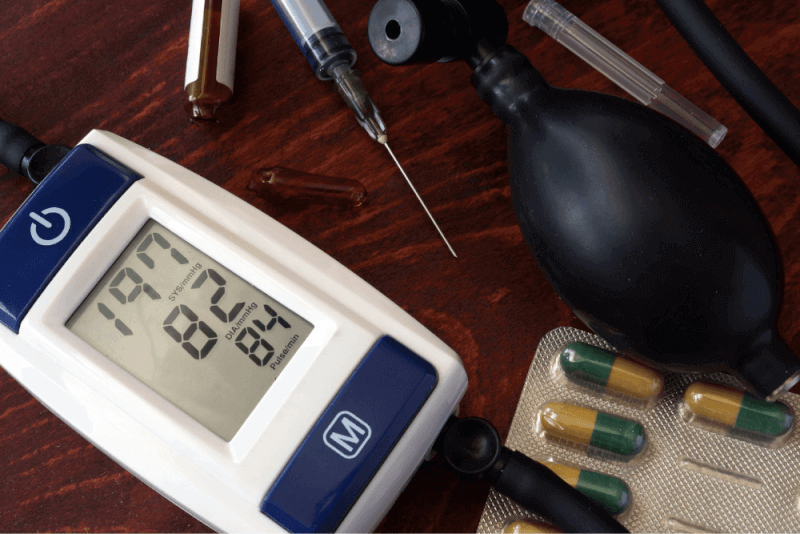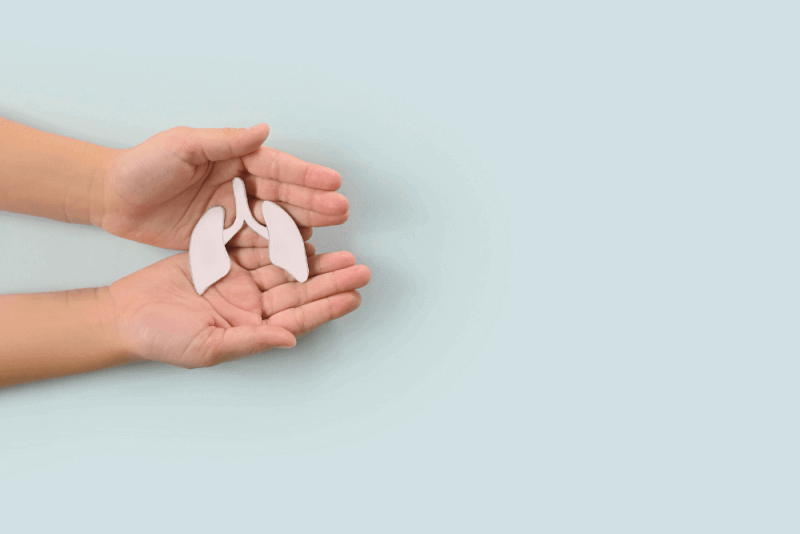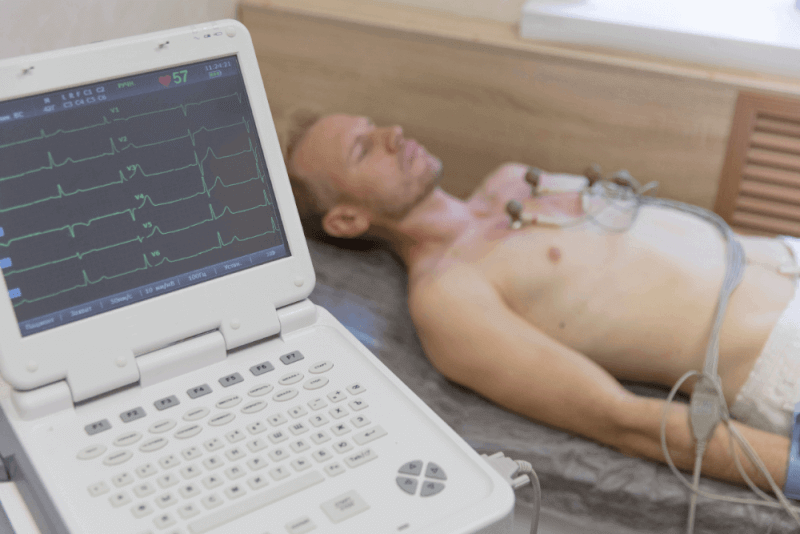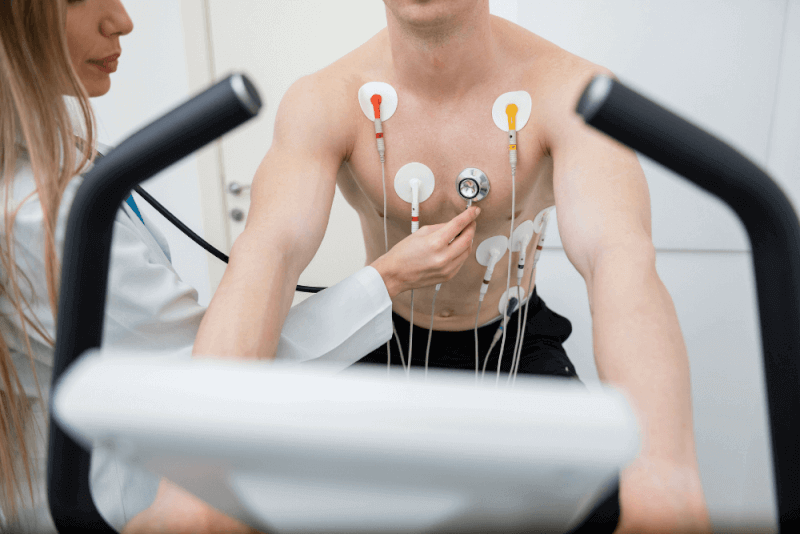Hypertension is one of the most common diseases in the society. It is a medical term used to describe conditions in which the pressure exerted by the blood on the arteries distributed from the heart to the body is so great as to cause heart disease. Hypertension, also known as high blood pressure, is determined by measuring systolic and diastolic values.
What is hypertension?
The pressure applied to the vessel wall is important in determining the blood pressure value. This pressure is determined by the amount of blood pumped by the heart and the resistance to blood flow in the arteries and veins. Therefore, too much blood pumped by the heart and narrow blood vessels increase blood pressure.
Adults without cardiovascular disease or risk should have resting systolic values below 12 mmHg and diastolic values below 80 mmHg. If these values are high, it is considered as antecedent hypertension. If the adult is at risk of cardiovascular disease, then this value is considered to be 10 mmHg.
Hypertension is not always symptomatic. For this reason, patients can suffer from hypertension for a long time without any symptoms. This damages the heart and blood vessels of patients. In addition, uncontrolled hypertension can cause serious health problems such as stroke and heart attack.
Hypertension, which usually occurs with advancing age, is seen in almost everyone due to the aging of the blood vessels. Hypertension is easy to detect and there are various methods to control it, so it does not affect quality of life.
Types of hypertension
Hypertension is divided into different types.
Masked hypertension
In patients with masked hypertension, blood pressure values measured in health institutions are normal. However, 24-hour or home measurements show high blood pressure readings. This type of hypertension is called masked hypertension. Masked hypertension, which occurs in approximately one in 7 to 8 people, causes much higher organ damage than people with normal blood pressure.
White coat hypertension
Patients with white coat hypertension, which is the opposite of masked hypertension, have normal blood pressure values when their blood pressure is measured 24 hours a day or in their home environment, but high blood pressure values when measured by healthcare professionals. For this reason, it is not correct to diagnose hypertension immediately if the values are high in measurements taken in environments such as health centers or hospitals.
White coat hypertension occurs in approximately 15% of the population and in approximately one third of patients with hypertension. It is more common in women, in newly emerging hypertension, in non-smokers and in measurements made in health institutions.
Isolated systolic hypertension
In isolated systolic hypertension, only the large blood pressure is elevated, while the small blood pressure is at or below normal. Isolated systolic blood pressure, a condition usually encountered in elderly patients, is one of the most common types of hypertension in the society.
Isolated systolic hypertension, which is caused by arteriosclerosis in the main artery coming out of the heart, usually due to age, can also be caused by overactive thyroid gland or anemia.
With the advancement of age, the hardened blood vessels cannot stretch sufficiently during pumping of the blood, leading to increased pressure. In addition, small blood pressure tends to fall after the age of 55 in both women and men. This is the major cause of isolated systolic hypertension.
In patients, an increase in the difference between small blood pressure and large blood pressure leads to an increase in some risks. Therefore, in the treatment to be applied, it is necessary to bring the large blood pressure to normal values without lowering the small blood pressure too much. The most important point to be emphasized is not to lower the small blood pressure too much during treatment.
Complications of hypertension
Not treating hypertension or keeping it under control brings with it many risks. Because excessive pressure applied to blood vessels can cause serious damage to the organs of patients over time. Complications that can be seen in patients if hypertension is not controlled are as follows.
Heart attack
When it comes to uncontrolled hypertension, the most risky complication is heart risk. Heart attacks, which can result in death, usually occur when there is hardening or narrowing of the arteries.
Paralysis
Restriction of blood flow in any of the vessels responsible for carrying blood to the brain causes a stroke. Hypertension also increases the risk of stroke as it directly affects these vessels to the brain.
Heart failure
Heart failure, which develops when the heart is under too much stress, is also a complication of hypertension. Heart failure, which occurs when the heart is constantly straining to pump blood or when the heart muscles stiffen, is also one of the main causes of death in hypertensive patients:
Symptoms of heart failure include the following.
- Fatigue
- Feeling powerless
- Urinary incontinence
- Sleep problems
- Swelling in the abdomen
- Inflammation of the hands and feet
- Difficulty breathing in and out
Diabetes
Diabetes can be the result of uncontrolled hypertension, but it can also be the cause. It is therefore different from other complications. Diabetes affects the blood vessels and causes them to lose their elasticity, leading to the development of hypertension. On the other hand, hypertension causes diabetes to worsen.
Atherosclerosis
There is no treatment for atherosclerosis, which is a complication of persistently high blood pressure. It also causes hardening of the arteries and can lead to atherosclerosis and coronary heart disease.
Kidney diseases
The kidneys are among the organs directly affected by hypertension. Because the kidneys are responsible for filtering the blood. Because hypertension causes restriction of blood circulation, which is vital for the kidneys. This leads to deterioration of the kidney system over time. It also causes inhibition of oxygenation and nutrient delivery to the organs. If there is a blockage in the arteries around the kidneys, the ability to get rid of waste is reduced. This leads to permanent damage to the kidneys.
Eye diseases
A significant proportion of patients are unaware of the negative effects of uncontrolled hypertension on eye health. Although they don’t seem to be related, hypertension causes obstruction of blood flow in the retina. For this reason, eye diseases develop slowly in hypertensive patients. Among these, loss of clarity, blurred vision and eye inflammation are the most common eye diseases.
Stages of hypertension
Although the classification of the degree of blood pressure in adults is qualitative, it provides convenience for physicians in practice. Therefore, the stages of hypertension are important for planning treatment.
The stages of hypertension apply to adult patients over the age of 18. At least 2 measurements are averaged to diagnose hypertension, which is divided into 3 different stages. Patients with stage 1 hypertension have mean large blood pressures between 140 and 159 mmHg and small blood pressures between 90 and 99 mmHg.
In patients with stage 2 hypertension, the average of large blood pressures is between 160 and 279 mmHg, while small blood pressures are between 100 and 109 mmHg. Finally, patients with stage three hypertension have large blood pressures above 180 mmHg and small blood pressures above 110 mmHg.
These stages apply to patients who are not receiving any treatment to control their hypertension. In addition, if small and large blood pressures are within the boundaries of different stages, staging is based on the blood pressure with the larger value.
Hypertension harms
Since hypertension causes disturbances in blood flow, it also causes various organs to be affected and damaged. Among the organs primarily affected are the arteries, kidneys, brain, heart and eyes. These organs primarily activate their defense mechanisms against the adverse effects of hypertension. However, if blood pressure values cannot be controlled for a long time, permanent damage to organs may occur.
Among these damages, risks such as heart failure or heart attack pose fatal risks for patients, while effects such as visual impairment significantly impair their quality of life. Among the damages caused by uncontrolled hypertension are the following:
- Heart attack
- Heart failure
- Aortic aneurysm
- Stroke
- Kidney failure
- Visual disturbances
- Brain hemorrhage
- Paralysis
- Narrowing of all vessels
Nutrition in patients with hypertension
Hypertension is affected by the food you eat. For this reason, patients should pay attention to their nutrition as well as their treatment. While some of the nutrients help lower blood pressure, others cause it to rise. For this reason, hypertensive patients should make their dietary choices consciously.
In addition to nutrition, patients should pay attention to their body weight and exercise regularly. It is extremely important for both hypertensive patients and those at risk of hypertension to maintain a healthy weight in order for the treatment to be successful.
What They Should Eat
Some foods are especially recommended for consumption by hypertensive patients as they regulate blood flow and increase the elasticity of blood vessels. These foods include mint, dill, parsley, lemon juice, thyme and onion.
In addition, garlic consumption is also recommended for hypertension patients. It is especially recommended to be consumed with yogurt to increase calcium intake.
Patients are recommended to consume fish at least 2 times a week to stabilize blood pressure. Patients who have problems in fish consumption are recommended to consume fish structure food supplements.
Foods that hypertensive patients can prefer as snacks include popcorn, raw vegetables and fruits. In order to maintain weight, these foods should also be consumed carefully.
Hypertensive patients should prefer breads made from whole grain flours instead of white bread in order to meet their fiber and mineral needs.
In studies on hypertension and nutrition, it has been observed that there is an inverse relationship between calcium and blood pressure values. For this reason, adding calcium-rich food sources to your diet will reduce your blood pressure values.
In addition, hypertensive patients should consume fresh fruits and vegetables in an important part of their diet. In addition, it is important to support protein intake with legumes.
What They Should Not Eat
Hypertensive patients should pay attention to sodium consumption first. For this reason, they should consume a maximum of 1.5 to 2.5 g of sodium daily. This is equivalent to 4-6 g of salt per day. In order to achieve this ratio, patients should not use salt in their meals and consume unsalted bread if necessary.
Another point that hypertensive patients should avoid is alcohol consumption. Patients should be adjusted to a maximum of 3 to 4 days a week. During these days, men should consume 2 glasses of alcohol and women 1 glass.
Hypertensive patients should eliminate foods high in saturated fats, especially margarine, from their diet to protect their vascular health. In addition to margarine, butter, tail fat and suet should not be consumed.
In order to control hypertension, patients should adopt a healthy diet. For this reason, they should especially avoid packaged foods and especially foods high in sugar.
Since pickles and sauces, especially delicatessen products, contain high amounts of salt, their consumption should be limited. If possible, these products should be avoided.
Tea and coffee are among the foods that hypertensive patients should avoid. Studies have shown that blood pressure values increase in people who consume too much tea and coffee.
Another food group that hypertensive patients should avoid is red meat. Patients should consider the lowest fat option when they want to consume red meat.
Blood Pressure Values by Age
| Age Range (Years) | Blood Pressure During Heartbeat (Systolic - mmHg) | Blood Pressure at Rest (Diastolic - mmHg) |
|---|---|---|
| 1-12 | 90-110 | 60-70 |
| 13-18 | 95-120 | 65-80 |
| 19-24 | 105-135 | 70-85 |
| 25-29 | 110-140 | 75-85 |
| 30-34 | 110-140 | 75-85 |
| 35-39 | 115-145 | 80-90 |
| 40-44 | 115-145 | 80-90 |
| 45-49 | 115-145 | 80-90 |
| 50-54 | 120-150 | 80-90 |
| 55-59 | 120-150 | 80-90 |
| 60-64 | 125-155 | 85-95 |
| 65-69 | 125-155 | 85-95 |
| 70-74 | 130-160 | 85-95 |
| 75-79 | 130-160 | 85-95 |
| 80+ | 130-160 | 85-95 |














